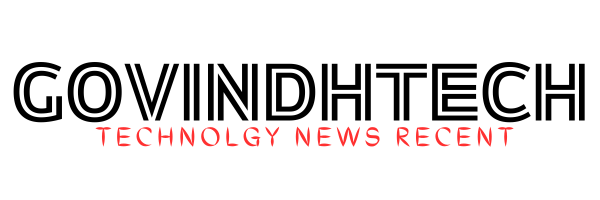Llama 3.2 vs. Marco o1
Because of its sophisticated ability to solve complicated problems, OpenAI’s o1 model has created a lot of enthusiasm in the field of large reasoning models (LRMs). Building on this foundation, Marco o1 is a new LRM that prioritises open-ended problem-solving across a range of topics in addition to traditional disciplines like computing and mathematics. Exploring the degree to which the o1 model can extend its reasoning capabilities to domains devoid of precise criteria and measurable rewards is a primary goal of Marco o1. By pushing the limits of what these models can accomplish, this investigation is essential to comprehending the possible uses of LRMs in practical situations where traditional metrics might not be applicable.
Marco o1: What is it?
The MarcoPolo Team of Alibaba International Digital Commerce created the sophisticated reasoning model Marco o1, which is intended to handle open-ended problem-solving activities.
It is based on the Qwen2 architecture and uses a complex mix of Monte Carlo Tree Search (MCTS) and Chain-of-Thought (CoT) fine-tuning approaches to improve its reasoning abilities.
Important Features
Unrestricted Reasoning
Because Marco o1 prioritises open-ended resolutions, it is appropriate for a wider range of applications where precise standards are lacking, in contrast to traditional models that perform well in standard answer domains (such as mathematics or coding).
Examining Potential Solutions
Like a chess player weighing several moves before choosing one, the model can investigate multiple solution paths with the MCTS implementation. This method aids in determining the most effective approaches to problem-solving.
Adaptable Reasoning Techniques
Marco o1 successfully divides difficult tasks into manageable steps by modifying its reasoning techniques according to the kind of difficulty it faces.
Uses
Marco o1 works especially well for:
- Situations requiring complex problem-solving where conventional solutions might not be adequate.
- Tasks involving mathematical reasoning.
- Complex translation problems that call for subtle comprehension.
Llama 3.2: What is it?
With an emphasis on effective performance for apps, the Llama 3.2 model comprises 1 billion (1B) and 3 billion (3B) parameter text models that are intended for mobile and edge devices.
Important Features
Designed with Edge Devices in Mind
Because of its lightweight nature, the model may be deployed on mobile and edge devices.
Length of Extended Context
Llama 3.2 makes it easier to handle lengthy inputs and preserve context during prolonged interactions by supporting a context length of up to 128K tokens (~96,240 words).
Assistance with Multilingual Communication
The paradigm works well in applications that need multilingual interaction since it is tailored for multilingual use cases.
Uses
Notable performance was shown by Llama 3.2 3B in certain domains, especially reasoning tests. It received a score of 78.6 in the ARC Challenge, which was somewhat lower than Phi-3.5-mini’s score of 87.4 but higher than Gemma’s 76.7. Likewise, Llama 3.2 3B outperformed Gemma and maintained a competitive edge over Phi in the Hellawag benchmark, scoring 69.8.
Therefore, they compare the reasoning-based questions on the Marco o1 and Llama 3.2 3B models in the next hands-on Python implementation. The main goal of this comparison evaluation is to determine whether Marco o1’s outputs indeed perform well on reasoning-based questions.
A Comparative Analysis of Marco o1 and Llama 3.2
Both Marco o1 and Llama 3.2 are sophisticated language models with distinct strengths that are intended for a variety of applications. This is a thorough comparison:
Problem-Solving and Reasoning
The Marco o1, created by Alibaba’s MarcoPolo Team, is well known for its strong reasoning ability. With improvements like Monte Carlo Tree Search and Chain-of-Thought fine-tuning, it makes use of the Qwen2 architecture. These characteristics enable it to handle challenging, open-ended challenges in a variety of fields, including logical thinking, mathematics, and multilingual assignments. It is a better option for applications requiring sophisticated reasoning and critical thinking because of its capacity to provide thorough, illustrative answers.
On the other hand, Meta’s Llama 3.2 is more adaptable when it comes to managing general-purpose tasks like content creation, instruction following, and summarisation. Although capable, it is not as good as Marco o1 at solving extremely complex logical puzzles or complex thinking problems.
Effectiveness and Implementation
Llama 3.2 excels in terms of effectiveness and versatility. It is made for real-time applications that need minimal processing overhead and is optimised for mobile and edge devices. Up to 128,000 tokens of context length are supported, allowing for efficient handling of large inputs and preserving coherence in protracted exchanges. It is appropriate for situations with limited resources because it is available in parameter sizes ranging from 1B to 90B, providing flexibility for a range of deployment requirements.
Despite having strong reasoning capabilities, Marco o1 is less effective in situations involving mobile or edge installations because to its higher computing requirements. It works best in high-performance settings with access to cutting-edge processing power.
Applications
Marco o1 performs exceptionally well in fields like research, advanced academic teaching, and multilingual data processing where precision and in-depth reasoning are essential. It is a preferred paradigm for specialised activities due to its thorough explanations and logical consistency.
With its effectiveness and versatility, Llama 3.2 is perfect for real-time applications such as mobile AI assistants, content summarisation, and customer support. Because of its extended context capabilities, it is a good fit for jobs like document analysis and narrative that need for long-context comprehension.
In conclusion
While Llama 3.2 handles cases needing efficiency, flexibility, and extended context handling, Marco o1 is the preferred option for activities requiring sophisticated reasoning and problem-solving. Your particular demands will determine the choice: Llama 3.2 is better suited for real-time, practical applications, while Marco o1 is better suited for deep analytical jobs.


